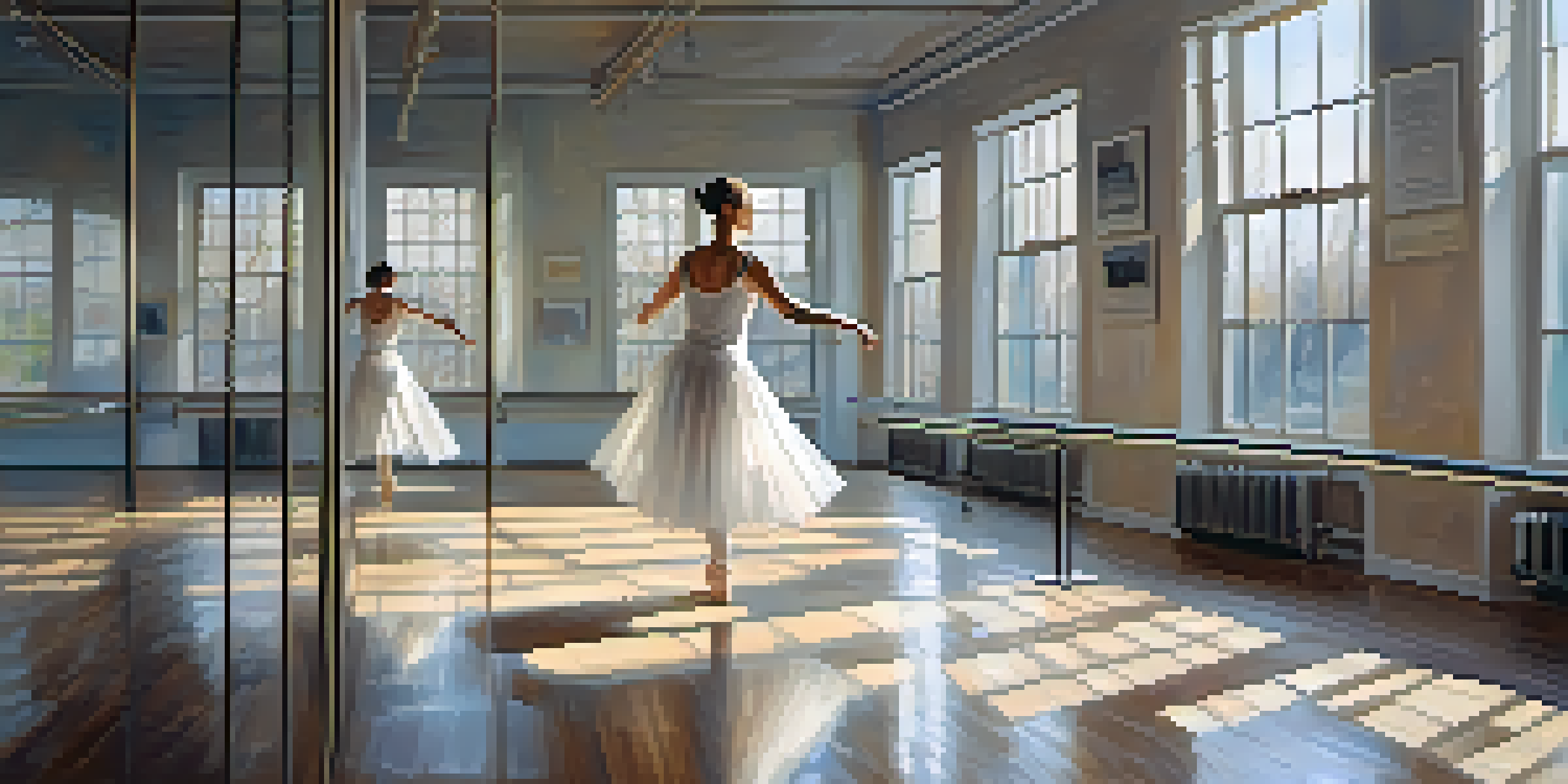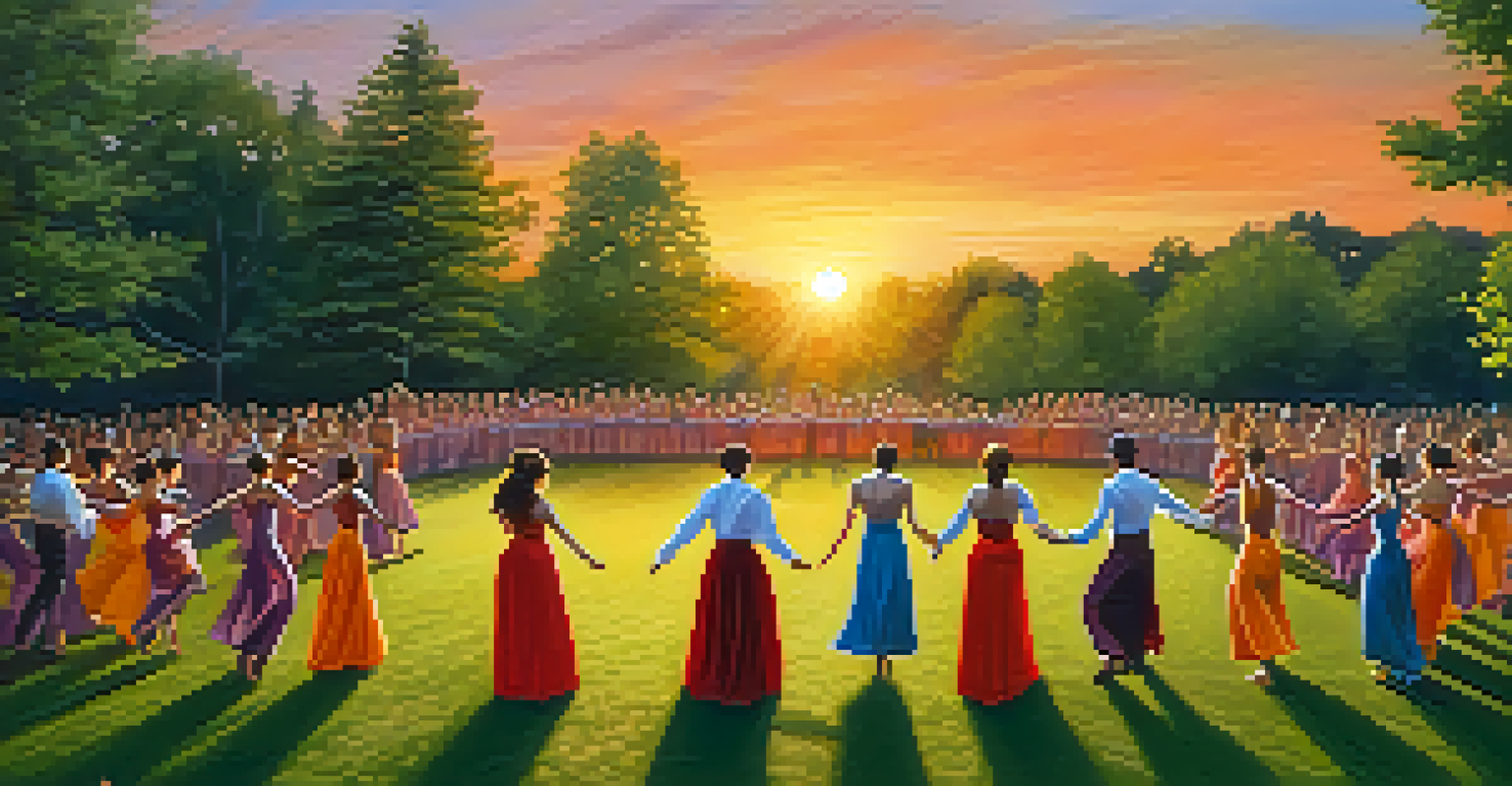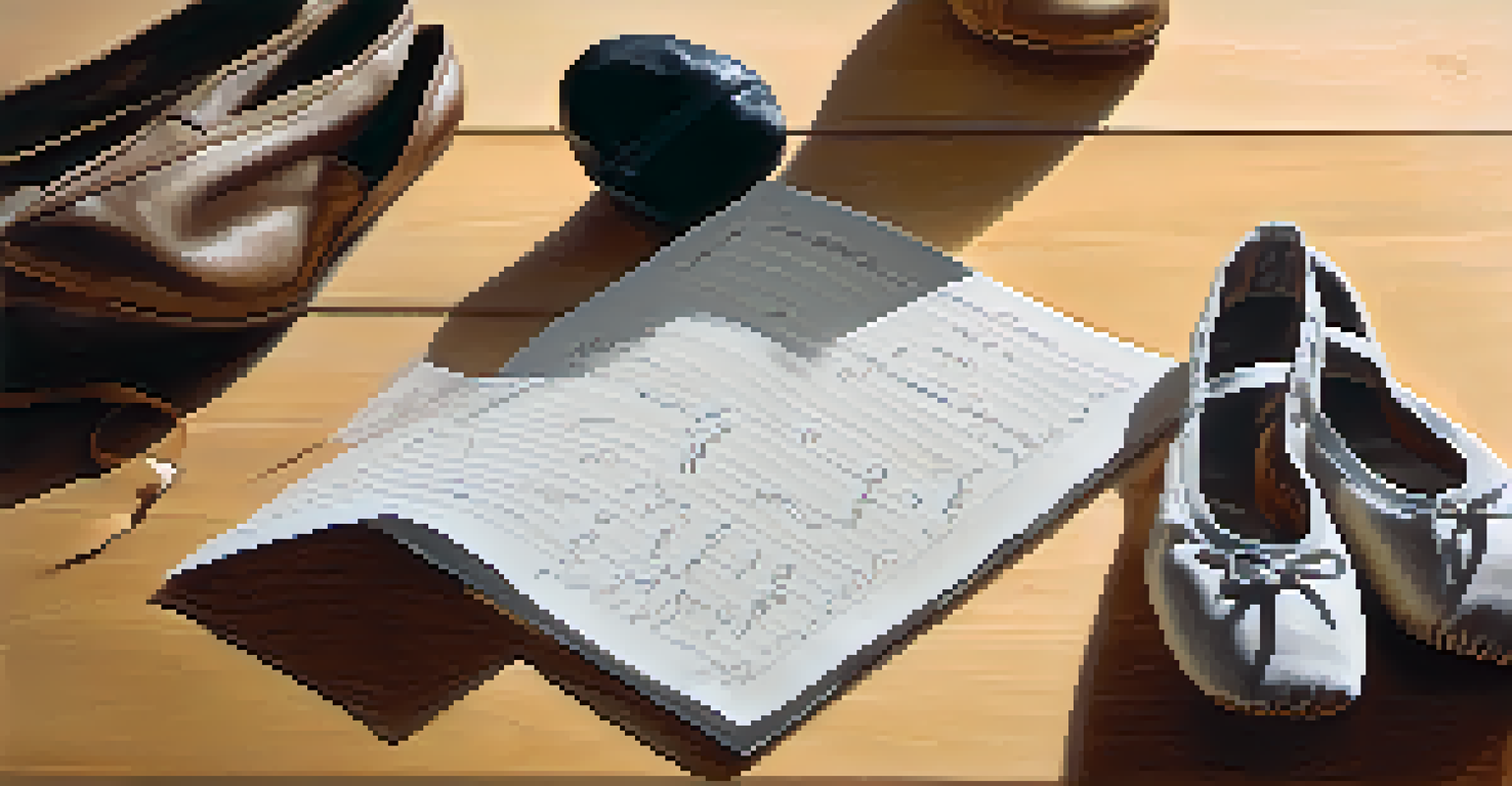Understanding the Choreographic Process: A Comprehensive Guide

What is Choreography and Why It Matters in Dance
Choreography is the art of creating dance movements and patterns. It’s not just about steps; it’s about telling a story and conveying emotions through movement. Understanding choreography helps dancers connect with the audience on a deeper level, making performances more impactful and memorable.
Choreography is the art of creating a story through dance, using movement to express what words cannot.
The importance of choreography in dance cannot be overstated. It shapes the structure of a performance, guiding dancers in expressing their artistry while maintaining a cohesive narrative. Whether it's a ballet, contemporary piece, or even a dance film, choreography serves as the backbone that supports the entire performance.
Moreover, choreography allows for innovation and creativity within the dance world. Choreographers can pull inspiration from various sources, blending styles and cultures to create something unique. This diversity enriches the art form and keeps it fresh and relevant in an ever-evolving landscape.
The Initial Stages: Conceptualizing Your Dance Piece
Every dance piece begins with an idea or concept. This initial spark can come from various sources, such as personal experiences, emotions, or even music. It’s important for choreographers to take the time to explore these ideas, as they will serve as the foundation for the entire piece.

During this stage, brainstorming is key. Choreographers might jot down themes, images, or even words that resonate with the concept. This process helps to clarify the vision and can lead to a more focused and cohesive dance piece in the long run.
Choreography Tells a Story
Choreography is not just about dance steps; it’s about conveying emotions and narratives through movement.
Once the concept is clear, choreographers often create a rough outline of the choreography. This outline serves as a roadmap, guiding the creative process while allowing room for spontaneity and exploration during rehearsals.
Exploring Movement: Techniques for Crafting Choreography
Movement exploration is a critical phase in the choreographic process. Here, choreographers experiment with various styles, dynamics, and formations to see what best fits their concept. This phase is all about playfulness and discovery, allowing creativity to flow freely.
Dance is the hidden language of the soul.
Utilizing improvisation can be a great way to uncover unexpected movements. By encouraging dancers to move without restrictions, choreographers can find gems that can be further developed into the final choreography. This dynamic process can lead to more authentic and organic movement.
Additionally, choreographers often study existing works and techniques to inspire their own creations. By analyzing the movement vocabulary of other styles, they can incorporate elements that resonate with their initial concept, adding depth and richness to the choreography.
Structuring Your Dance: Organizing Movements and Phrases
Once the movement exploration is complete, it’s time to structure the choreography. This involves arranging the discovered movements into phrases and sections that flow seamlessly from one to another. A well-structured piece keeps the audience engaged and enhances the overall narrative.
Choreographers often utilize tools like repetition, contrast, and variation to create interest within the structure. For example, repeating a particular movement can emphasize a theme, while contrasting sections can highlight emotional shifts within the piece. This thoughtful organization adds layers and complexity.
Feedback Fuels Choreographic Growth
Feedback from dancers and audiences is essential for choreographers to refine their work and evolve their artistic style.
Moreover, transitions between movements and sections are crucial. Smooth transitions maintain the momentum of the performance, ensuring that the audience remains captivated. Choreographers should pay close attention to how dancers move from one phrase to another to achieve a fluid and cohesive experience.
Rehearsals: Bringing Your Choreography to Life
Rehearsals are where the magic happens. This phase allows choreographers to work closely with dancers, refining movements and ensuring that the original vision is being realized. During rehearsals, feedback is essential, helping to adjust details that may not translate as intended.
It's also a time for collaboration. Dancers often bring their own interpretations and ideas to the choreography, which can enhance the overall piece. Choreographers should remain open to suggestions, as this collaborative spirit can lead to unexpected and delightful results.
Additionally, rehearsals provide an opportunity to work on timing, spacing, and dynamics. These elements are vital in ensuring that the choreography is not only visually appealing but also emotionally resonant. Fine-tuning these aspects can elevate a performance from good to great.
Performance: Showcasing Your Choreographic Work
The culmination of the choreographic process is the performance itself. This is where all the hard work and creativity come together for an audience to witness. Performing a dance piece is an exhilarating experience, and it’s the moment when the choreographer's vision is fully realized.
During the performance, dancers embody the choreography, conveying emotions and stories through their movements. This connection with the audience is crucial; it’s what makes live performances so powerful and memorable. A well-executed performance can leave a lasting impression.
Rehearsals Bring Ideas to Life
Rehearsals are crucial for refining choreography, allowing collaboration and adjustments to enhance the performance.
Post-performance reflection is also valuable. Choreographers should take time to assess what worked well and what could be improved for future pieces. This reflection not only enhances their craft but also contributes to their growth as artists.
The Importance of Feedback: Learning and Evolving as a Choreographer
Feedback is an essential part of the choreographic journey. After performances and rehearsal processes, gathering insights from dancers, peers, and audiences can provide valuable perspectives. This feedback helps choreographers understand how their work is perceived and where adjustments might be needed.
Constructive criticism can be a powerful tool for growth. It encourages choreographers to reflect on their techniques and artistic decisions, fostering an environment of continuous improvement. Embracing feedback allows for evolution in their choreographic style and enhances future works.

Moreover, engaging with a community of fellow choreographers can provide inspiration and support. Sharing experiences and challenges can lead to new ideas and collaborations, enriching the choreographic landscape and creating a vibrant network of artists.